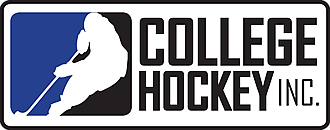Wednesday, May 10, 2017
Men’s Hockey Leads NCAA’s APR Again
Hockey student-athletes’ success in classroom highlighted in annual report.

The academic success of NCAA Division I men’s hockey players continues to set the standard across college sports, with hockey leading all men’s sports with at least 50 teams in the NCAA’s Academic Progress Rate (APR) for the fourth straight year.
Men’s hockey’s four-year average APR score of 986 from 2012-16 is five points above the NCAA average and edged golf (984) and tennis (981) among Division I sports with at least 50 teams nationwide. Men’s hockey’s single-year APR score for 2015-16 of 984 also led all men’s sports with 50 or more programs.
NCAA Release | NCAA Averages & Trends Report (.pdf)
The APR, created in 2003 to measure Division I schools and teams on their student-athletes’ success in the classroom, awards points to teams based on students’ grades, their progress toward their degree and for staying in school. Teams are also rewarded in the APR for students who return to school to complete their degree.
The APR is related – but not identical – to the NCAA’s Graduation Success Rate (GSR), serving in a way as a predictor of GSR success. Men’s hockey’s 92% graduation rate for student-athletes who enrolled in 2009 is among the highest figures of all men’s sports.
The calculation of APR also rewards teams when former student-athletes return to school to complete their degree. In the past year players like Torey Krug (Michigan State) and Chris Kreider (Boston College) have completed their undergraduate degrees despite leaving school early to play in the NHL.
Not only is hockey excelling on average as a whole, but each of the individual teams has demonstrated success. Across all sports, APR scores below 930 are subject to penalties, but no men’s hockey teams are within 20 points of that threshold.
Six teams – Colgate, Dartmouth, Merrimack, Minnesota, Robert Morris and Yale – had perfect four-year average APR scores of 1,000. More than 77 percent of all teams (46 of 59) had four-year APR scores of at least 980 and more than half (31 of 59) have scores of at least 989.
